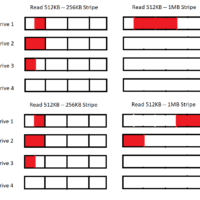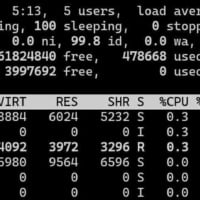Linux
16 Dec 2022
SNI SSL? Configure Apache SSL virtual hosts with SNI to host multiple SSL certificates on one IP

In a previous article, we explored the question of whether SSL requires a dedicated IP address. We learned that, it is possible to host multiple SSL websites on a single IP address using a technology called Server Name Indication (SNI). With IP addresses becoming more expensive and scarce all the time, and SSL being all-but-mandatory
13 Dec 2022
Copy Files and Directories in Linux with SSH using SCP, CP, and Rsync

As a server admin, even simple tasks can benefit from a fresh perspective. To that end, today’s article talks about multiple ways you can copy an entire directory and its files in linux. To do so, we’ll be exploring three commands: cp, scp, and rsync. cp You can copy files and folders within the same
12 Dec 2022
Swap Memory in Linux | What is Swap Space exactly?

Understanding SWAP memory usage in Linux is crucial for optimizing system performance and resource management for our customer’s dedicated servers hosted here at IOFLOOD. To explain what is swap memory in Linux and how to monitor and manage it, today’s article will delve into the concept in detail. TL;DR “Swap memory” in linux is a
07 Jun 2022
How to use MTR – A Guide For Windows, Mac, and Linux

One of the most important aspects of an internet connected system is the stability of the network. There are a number of tools to diagnose, troubleshoot, and verify network performance and connectivity. Today we’re going to be discussing one of the most important of those: MTR. In this article, we will address some important topics:
16 May 2022
How to configure IPv6 for SolusVM
At IOFLOOD, quite a lot of our customers run VPS hosting companies, so we try to be familiar with the technologies and control panels used for VPS hosting. We do this because we want to provide help when our customers face challenging server configuration issues. In today’s article, we’re going to discuss how to configure
08 Jul 2021
Linux Bridge vs OpenVSwitch — How to Improve Virtualization Network Performance

How to fix packet loss and latency in high bandwidth VPS servers by upgrading to OpenVSwitch Virtualization is one of the most pervasive and transformational technologies in the hosting world to have come along in the last decade. Despite this, maintaining the efficient operation of virtual machines is not always easy. In this article, we’ll
02 Mar 2021
Testing the network speed of your IOFLOOD.com server with iperf

With 10gbps and faster network ports becoming more common all the time, it is becoming increasingly important to make sure that a server can actually use all of that bandwidth. At these high speeds, many things can go wrong that limit your performance to less than the maximum speed of the port. The most important
04 Feb 2021
Optimal RAID Stripe Size and filesystem Readahead for RAID-10?

What RAID stripe size is ideal for an array of hard drives? What are the default settings for both raid stripe size and filesystem readahead? Are those defaults acceptable? How do these settings impact the performance of my server? In this post, we’ll go into detail as to what settings are ideal for a server
25 Jan 2021
IOWAIT in Linux — is iowait too high?

High IOWAIT can be a real problem in linux, making your server grind to a halt. The question is, how high is too high? When should I be concerned? Firstly, we’ll talk about what IOWAIT means, discuss related statistics and how to interpret them, and finally how to decide if IOWAIT is causing a problem.
21 Feb 2020
What is Apache Keepalive Timeout? How to optimize this critical setting.

If you’ve struggled to fix web server slowdowns or crashes, you may have come across a setting for Apache called “Keep-Alive”. This is one of the most powerful — and frequently misused — features of apache. In this article, we’ll explain: What is Apache Keepalive / Keepalive Timeout? What configuration is optimal for best server